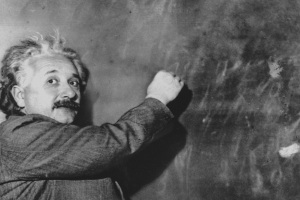Dieser Beitrag ist auch verfügbar auf:
Deutsch
Why saving money requires stretching and bending down
There are about 60,000 items in most supermarkets. The operators place them using a so-called planogram. Each shelf is divided into four zones: At the very top is the “stretching zone”, at eye level is the “viewing zone”, directly below is the “gripping zone” and at the very bottom is the “bending zone”. It has been proven that items at eye and handle height bring in the most profit – a good place for luxury and branded items. For cheaper products for everyday use, the customer has to work a little harder: they are hidden at the very top or at the very bottom.
We also need the right atmosphere to make us want to shop. It should not be too hot or too cold in the store – 19 degrees is the ideal temperature – and the store should be bright and friendly. Products such as meat and vegetables are usually illuminated with warm light to make them look fresh and appetizing.
Many supermarkets use special scents that mimic the smell of freshly baked bread. Such tactics make goods that have been on display for days look like they have just arrived. Music can also be used to encourage us to shop. The founders of the German shopping radio station “POS” (Point of Sale) were well aware of this. To this day, “POS” entertains customers in many German supermarkets with appropriately relaxing sounds.
We are also powerless in the face of discount signs: The Siegfried Vögele Institute in Königstein, Germany, and the University Hospital in Bonn, Germany, used an MRI scanner to study how discount labels affect our brains. Their findings: discounts directly activate our reward center.
These strategies can reduce our self-control and weaken our discipline. This is also why supermarkets label non-reduced items as “discounted” and advertise them with large, colorful signs. The trick is that the items labeled as discounted – which are actually not discounted at all – are displayed in a different location than usual. This prevents customers from comparing prices.
Feel the pester power
Just before the checkout, things get tricky again: Crafty supermarket operators like to stack all sorts of “impulse goods” around the checkout line – items that no one really needs, but that are easy to crave. This is especially true when children are going shopping with their parents, which is why marketing psychologists have coined the term “pester power”.
This usually involves inflated prices: a single chocolate bar often costs as much as a pack of three on the shelf. But the longer we have to wait, the more likely we are to buy – or give in to our offspring’s pestering. Although the supermarket area optimized for pester power only accounts for around 1.5 percent of the store space, five percent of total sales are generated here, according to calculations by the EHI Retail Institute from Cologne, Germany.
All of these tricks lead to us ending up with numerous items in our basket that we didn’t originally intend to buy. Consumer advocates therefore advise customers to always go to the supermarket with a shopping list and to keep a keen eye on price developments.






